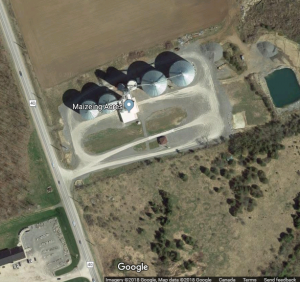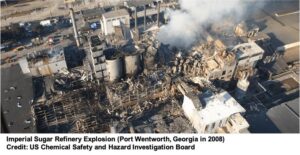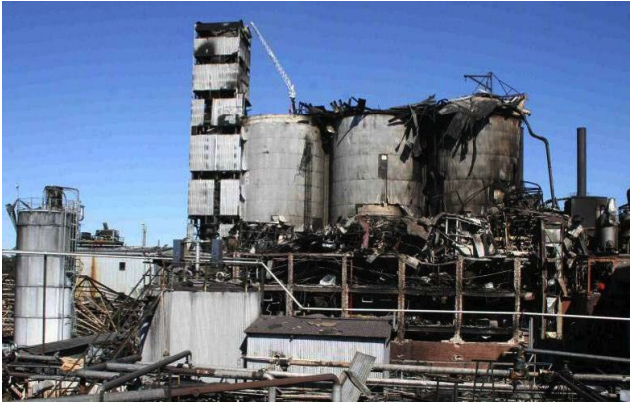Updated October 14, 2024, Authored by Dr. Chris Cloney

Have you ever wondered who creates, collects, and distributes information on large scale chemical disasters worldwide?
That is the job of the US Chemical Safety Board, (CSB), and Hazard Investigation Board, an independent federal agency. The Chemical Safety Board and Hazard Investigation Board investigates industrial disasters to prevent repeat incidents within chemical and processing industries.
This post presents a review of the Chemical Safety Board’s activities over the last six years and demonstrates their impact on the industrial safety community.
It also presents industry and public feedback on the recent news that the Chemical Safety Board and Hazard Investigation Board have been eliminated within the 2018 proposed presidential budget.
Who is the US Chemical Safety Board?
The Chemical Safety Board and Hazard Investigation Board is an independent, non-regulatory, US federal agency charged with investigating severe industrial chemical and toxic chemical release accidents (see their website here). The agency’s board members are appointed by the President and confirmed by the Senate. The agency’s board members are a collection of mechanical and chemical engineers, industrial safety experts, investigators, and board members with several years of experience in industrial safety. The Chemical Safety Board and Hazard Investigation Board is a regulatory agency similar to such as the Occupational Safety and Health Administration, (OSHA), and the Environmental Protection Agency, (EPA), industry organizations, and labor groups. Congress designed the Chemical Safety Board to be non-regulatory and independent of other agencies. The the U.S. Chemical Safety and Hazard Investigation Board conducts root cause investigations of chemical incidents, and chemical accidents at fixed industrial facilities. Root causes are usually deficiencies in safety management systems, but can be any factor that would have prevented the accident if that factor had not occurred.
Mission
The Chemical Safety Board and Hazard Investigation Board was authorized by the Clean Air Act Amendments of 1990 and was put into operation in January 1998. They are charged with conducting root cause investigations and independent investigations of severe industrial accidents, chemical hazards,
chemical incidents, and chemical accidents, (often many injuries, fatalities, and facility destruction over millions of dollars). The U.S. Chemical Safety and Hazard Investigation Board (CSB) also provides recommendations to regulatory agencies, industry organizations, and labor groups to prevent and mitigate these accidents in the future.
Vision
The Chemical Safety Board and Hazard Investigation Board’s vision is “A Nation Safe from Chemical Disasters” (see their 2016 impact video here). Their main tool for achieving this vision is creating, tracking, and advocating recommendations from their investigation reports. Furthermore, the U.S. Chemical Safety and Hazard Investigation Board, (CSB), typically highlight safety management deficiencies, equipment failures, human errors, unforeseen chemical reactions, and other hazards involved in the incident.

Public Outreach
Another main objective of the Chemical Safety Board and Hazard Investigation Board is to produce educational material around industrial safety. They do this through their report distribution, creation of reenactment and safety demonstration videos, and holding public meetings to share their findings. These materials are often used in training for the industrial community, research institutions, and incident first-responders. Reenactment Video – AL Solutions Dust Explosion and Fire (December 2010, 3 Fatalities, 1 Injury)
Why this Review?
The US Chemical Safety Board and Hazard Investigation Board, an independent federal agency, has been eliminated in the 2018 Proposed Presidential Budget (see statement from the CSB here), and is currently fighting to stay in existence pending the final budget tabled by Congress.
The purpose of this review is to present a summary of the Chemical Safety Board and Hazard Investigation Board’s activities over the last six years. Note that I have no affiliation with the U.S. Chemical Safety and Hazard Investigation Board, (CSB), and this information is taken from their website or other online sources. Other than using their reports in my academic studies, I have had little interaction with the Chemical Safety Board and Hazard Investigation Board at the time of this writing.
Investigations & Recommendations
Some of the largest incidents reported over the last six years include:
- Ammonium Nitrate Explosion at West Fertilizer Company in Texas (15 Fatalities, 260 Injuries)
- Well blowout and Explosion at Macondo Oil Rig (11 Fatalities, 17 Injuries)
- Multiple Metal Dust Flash Fires at Hoeganaes Facility in Texas (5 Fatalities, 3 Injuries)
- Oil Pipe Rupture at Chevron Refinery (15,000 Members of the Public Sought Medical Treatment)
- Chemical Release at Freedom Industries (Chemicals released into the water supply of 300,000 people, 300+ people treated at medical facilities)
- The Danger of Popcorn Polymer: Incident at the TPC Group Chemical Plant
The Chemical Safety Board also released a review of public safety around abandoned oil tank sites. Accidents at these sites are reported to have caused 44 public fatalities and 25 injuries between 1983 and 2010. Furthermore, they also published a review of key lessons to prevent injuries during educational demonstrations of flammable chemicals.
Public Outreach
In addition to incident investigations, the U.S. Chemical Safety and Hazard Investigation Board (CSB) as an independent federal agency charged with investigating industrial chemical accidents, has provided a significant level of public resources and educational material. These include incident reports, extensive photographing and reconstruction of accident processes, and creating safety videos.
Since 2011 the U.S. Chemical Safety and Hazard Investigation Board, (CSB), has created 18 safety videos with a combined total of 1.85 million views on YouTube. They have also held community meetings in the Freedom Industries Chemical Release Incident (September 2016, Charleston, West Virginia), West Fertilizer Explosion and Fire (January 2016, Waco, Texas), the Macondo Blowout and Explosion incident (June 2014, Houston, Texas), and Chevron Refinery Fire (January 2014, Richmond, California).
Two reports and videos that have had a significant impact on safety in university education are those on the Texas Tech University Chemistry Lab Explosion (January 2010, 1 Injury) and the Report “Key Lessons for Preventing Incidents from Flammable Chemicals in Education Demonstrations“. Both of these investigations included gut-wrenching videos demonstrating the potential severity of laboratory accidents when safety management principles are not followed in education (Link1, Link2).

Personal Uses
At the time of writing, I have five of the U.S. Chemical Safety and Hazard Investigation Board (CSB), incident reports in folders beside my desk. I am in the late stages of my PhD so they are filed along with a couple hundred other papers relevant to gas and dust explosion research.
Throughout my undergraduate and graduate degrees, the U.S. Chemical Safety and Hazard Investigation Board, (CSB) videos were often shown as educational material in classrooms and for case-study assignments. Personally, I have referenced several in my comprehensive examination, PhD research proposals, and journal/conference publications.
Since the proposed budget was released, I have had a lot of feedback from people from the myDustExplosionResearch.com newsletter and from the online combustible dust community. I thought it would be useful to share some of their feedback here to highlight their thoughts:
“An ill thought out move by the current administration. For an annual budget of $12 million they provided an huge bang for the buck. They are the ones that made code enforcement aware of the serious hazards of dust explosions” Dr. Ashok Dastidar, Fauske & Associates
“With the closure of the CSB, it is clear America is returning to the dark ages…” Adrie van Beek, Trinseo/Styron LLC
“Few industrial salesmen and many manufacturers do not know much about combustible metal dust. The CSB was a good place to send salesmen and customers to get education on these hazards.” Denise Duncan, A T Industrial Products
Public Response
Before finishing off this post, comments that I have seen from the general public with regard to this news, were posted on Twitter and YouTube and helped demonstrate the impact of the U.S. Chemical Safety and Hazard Investigation Board (CSB) both within North America and Internationally.
Conclusion
With an annual budget of $11-12 million dollars per year and a staff of 40, the U.S. Chemical Safety and Hazard Investigation Board, (CSB), has significantly enhanced the global safety of chemical and processing industries, including the review of the effectiveness of regulations and regulatory enforcement. Four areas that were highlighted in the current review from the U.S. Chemical Safety and Hazard Investigation Board are:
- Providing an average of 32 recommendations per year to regulatory agencies, industry organizations, and labor groups.
- Increasing industry awareness for specific hazardous materials (e.g., Combustible Dust) and providing training material.
- Providing case studies and educational material for students and researchers.
- Increasing the global status of the United States world-wide as a country committed to the safety of its people.
What Do You Think?
If you have any thoughts on the elimination of the U.S. Chemical Safety and Hazard Investigation Board (CSB), I would love to hear them!
Share your thoughts using the comment box at the bottom of the page or email to: [email protected]
Dr. Chris Cloney
https://dustsafetyscience.com/
